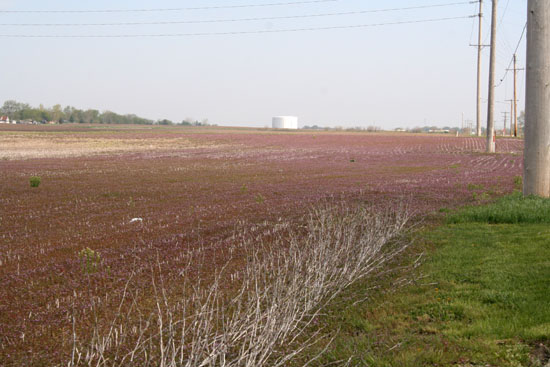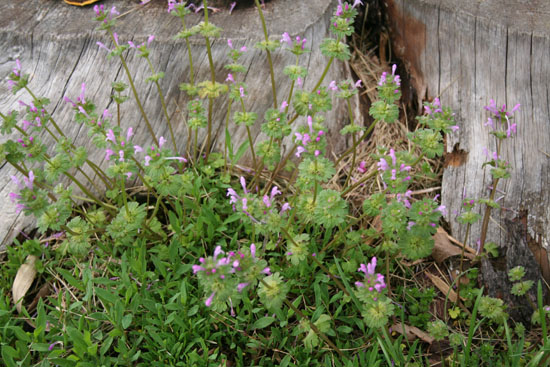Issue 3, May 9, 2011
Henbit
In the past few weeks I've received a few phone calls concerning the identity of the purple flowers that are abundant in fields, lawns, and landscapes now. Although there are a couple of weeds they could be, odds are that sea of lavender that you see across the state is really henbit (Lamium amplexicaula).

This cool season annual or biennial mint has certainly been loving this cold, wet spring. Not only are there many henbit plants in bloom right now, but I've also seen several henbit seedlings as well. This plant reproduces by seed and may spread by rooting stems. Plants are generally low growing but can grow to 16 inches tall. The stems are square shaped (4 sided), green to purplish, and may be smooth or hairy. The leaves are triangular to circular in shape and have palmate venation with a deep crinkle along the veins. The leaf edges have rounded teeth. Upper leaves are borne directly on the stem, while lower leaves are found on long petioles (opposite each other). Leaves are typically 1/2 to 1 inch long and hairy. They often begin as a dark green but tend to lighten in color as they age. The roots are fibrous. Henbit flowers are tubular, up to 3/4 inch long, pink to red to purple, and borne in whorls in the upper leaf axils (where the leaves meet the stems). To me, they look like pink puckered lips. Henbit normally produces flowers April to June but can sporadically until fall.

Henbit may be pulled pretty easily, especially right after a rain when the soil is moist. A hoe will work well too. In landscape beds, mulch and groundcovers work well to keep weed pressure down. In established turf, prevent henbit infestations by maintaining turf density and health. A thicker lawn will compete well with weeds. Avoid thin seedings in the autumn. Apply postemergent herbicides (such as 2,4-D or dicamba in turf) from mid through late spring and again from mid to late autumn. They work best when weeds are small. Be sure to seed open areas in with turf to prevent more unwanted weeds from moving in. Preemergent herbicides (such as pendimethalin, dithiopyr, isoxaben, or prodiamine) should be applied in late summer before germination. For example, Preen (trifluralin) could be applied to landscape beds in the late summer/early fall. Of course, read and follow all herbicide labels very carefully. Certainly control henbit before it goes to seed as one plant is capable of producing 200 seeds.
There are a few henbit look-alikes including purple deadnettle (Lamium purpureum). The leaves of this plant, however, have a pointed tip so they are triangular shaped. They are less deeply lobed than those of henbit and are attached to the stem by a short petiole. Also, the leaves and stems are conspicuously red or purple. Ground ivy or creeping Charlie is similar to henbit too, but it is a creeping perennial with smooth leaves in pairs on long petioles. (Michelle Wiesbrook)
Author:
Michelle Wiesbrook